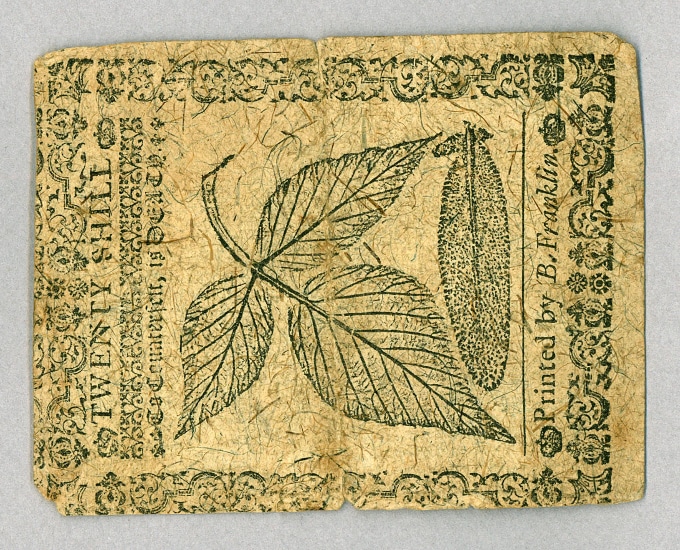How Benjamin Franklin Applied His Penchant for Innovation to Revolutionize Paper Money

Benjamin Franklin, the inventor of the lightning rod and bifocals, applied his penchant for innovation to printing techniques for colonial currency, writes Veronique Greenwood for The New York Times.
When he moved to Philadelphia in 1723, Pennsylvania had just started printing paper money to stand in for coins. While the system worked, there were many issues, such as counterfeiters who often found the bills not that difficult to copy and would then flood the market with fakes, devaluing the real money.
Franklin won the contract in 1731 to print £40,000 for the colony of Pennsylvania. He created a stream of baroque money using a copper plate of a sage leaf to foil counterfeiters.
This intricate pattern of the leaf’s veins could not easily be imitated. He also experimented with making a new kind of paper and formulating inks.
This work during his printing career went on to influence many other printers.
Today researchers are trying to differentiate between the steps he took to foil counterfeiters and those he created simply to experiment with new printing techniques.
“I have questions about a whole bunch of inks,” said Jessica Linker, a professor of American history at Northeastern University.
Read more about Benjamin Franklin in The New York Times.
______
Connect With Your Community
Subscribe for stories that matter!
"*" indicates required fields
























